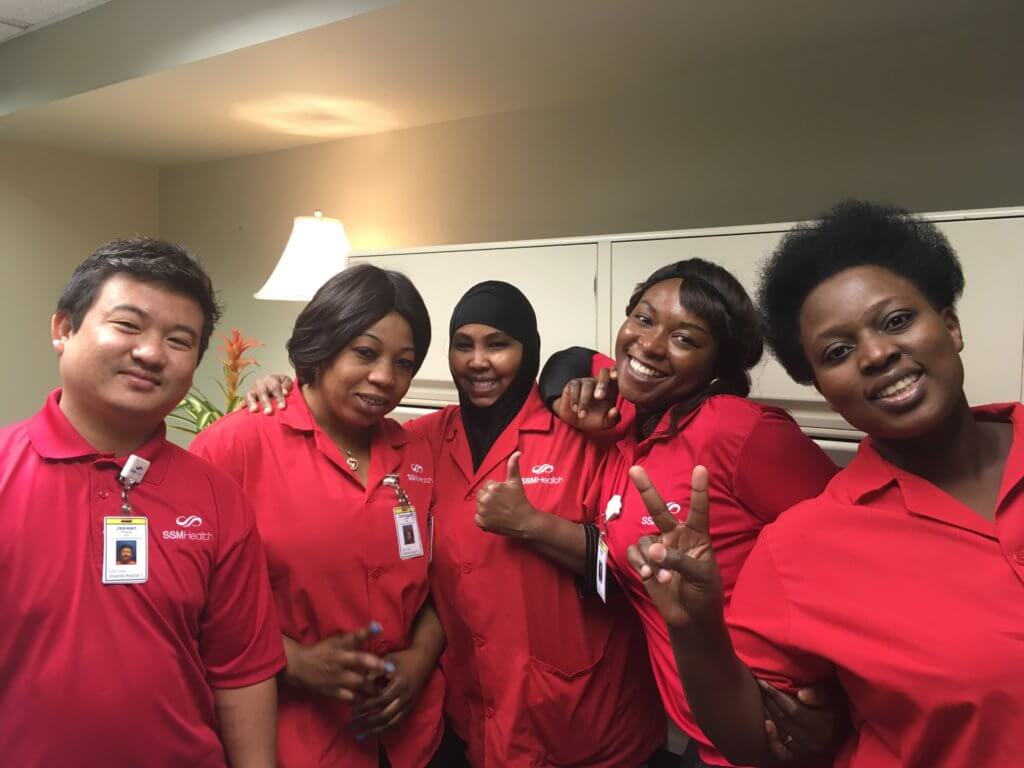
For years I’ve told hundreds of physicians and staff in our service sessions and training workshops that I would never ask them to do something that didn’t feel authentic or genuine. I was sincere in that and worked hard to find the most meaningful best practices that would enhance their communication without taking them more time (blame my Lean/Six Sigma training for that!). I would continually tell them that this wasn’t “Smiles School” etc. Plus, I truly believed that asking people to fake a smile or other behavior was something that patients could see right through. Then, this year, while working with an amazing frontline team and encountering some thoughts on smiling, I changed my tune!
We were working with an interdisciplinary team of housekeepers, phlebotomists, ED techs, care partners, guest services/front desk staff, and transporters. They worked together to analyze their patient comments and patient experience data, they reviewed best practices in articles in the literature, and the pored over feedback from several employee focus groups. It was out of this that they determined a service structure on which we would train their peers. One of the key aspects they identified was “Smile!”.
What was interesting with this team was the articles and topics that resonated with them the most. For the concept of smiling, there were two articles that the team really latched onto: one in Fast Company and one in Forbes. Now, for those of you saying “Hey, wait a minute, those aren’t peer reviewed journals,” never fear, there are links within these articles to others that talk more about the studies behind these synopses. Remember though, my commitment to you in this series is to bring you some of the articles that our team has found work well with frontline teams. So, voilà, at the end of this post, they are waiting for you!
Now, back to the smiling and why I changed my mind…
The benefits of smiling for your impact on others is pretty widely known:
- A Penn State University Study found that people who smile are interpreted as more likeable, courteous, and competent!
- Smiles are also contagious: if you smile, others are more likely to smile and everyone becomes a little happier.
That’s not, however, what shifted my focus. Rather, the benefits that smiling can have on YOU, the one doing the smiling is what changed my mind. Here’s the gist:
- Smiling can change your brain. When you’re smiling, your brain is aware of this and notes it. The more you’re smiling, the more readily you can change the brain’s tendency to think more negative thoughts. Keep smiling often enough and you can rewire your brain to continually think more positively!
- So, I explain it to groups like this, let’s say you’re having a bad day, you woke up to find the milk spoiled for your cereal, someone used the last of the coffee creamer (and if you’re like me you can’t have your morning cup o’ Joe without that!) Then, your car decided to protest the heat by refusing to let the air conditioner run for more than 10 minutes when it’s above 90 degrees (yes, this is a real example in my life this week!). You bring all of that with you to the hospital and you walk into your job. Now, you might not feel like smiling. However, the science behind this shows that by physically changing the expression on your face, you can change your internal mood as well!
Armed with this information, I now unabashedly encourage everyone in our workshops to smile, whether they feel like it or not. I do this not primarily because I care about the impact it will have on their patients, families, and co-workers, but more so of the impact it can make on them!
Recently, I had the privilege of hosting a webinar with Gretchen Leiterman, COO, and James Galloway, Director of Environmental Services & Linen, for SSM Health Saint Louis University Hospital. They shared about some of the work that they had done in their organization around a Courtesy & Respect Pilot (utilizing the interdisciplinary team that I referenced above), Care Team Coaching, and Implementation of Leader Rounding. Additionally, James shared a bit about some of the key strategies that they have incorporated in his department to help increase their cleanliness and improve the service of their team to patients, families and staff. Because smiling was one of those key strategies, I’d like to close with a quote from that webinar from Gretchen as she explains a bit about the significance of the photo used in this blog:
“For the Courtesy & Respect work that we did at SSM Health Saint Louis University Hospital, we worked closely with the International Institute. We have several new immigrants who work at St. Louis University Hospital. Many of them work in our Environmental Services Department. We wanted to make sure that our approach to this pilot would work across cultures and the Institute helped us with this.
This is a picture of 5 of our housekeepers. They are all new to the United States. It shows us how different a smile can be across cultures and people. Take a minute to look at each person. Each is smiling. And each is different.
We knew for this group, our pilot had to be meaningful and easy to understand across the differences among the staff involved. Smiling was one of those universal and beautiful concepts that the team was sure to incorporate!”
If you missed this webinar and would like to see a copy of the slides or hear more about the information presented, please let me know at [email protected].
How Smiling Changes Your Brain by Vivian Giang
Is “service with a smile” enough? Authenticity of positive displays during service encounters by Grandey et al.
Smile! It Could Make You Happier by Melinda Wenner
Why Faking a Smile Is a Good Thing by Roger Dooley
